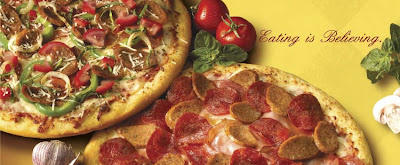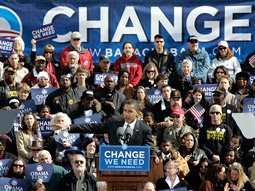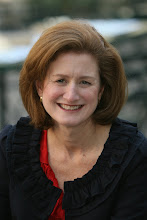Here is an old Wendy Commercial:
White Tea Commercial:
Snapple Green Tea Commercial:
There is a new Red Tea commercial that features the same spokesperson but I am not able to access it outside of Mintel.
Friday, December 5, 2008
Thursday, December 4, 2008
GM = General Misery?
 My GM car dealership called Saturday to point out (as if I didn't know) that my Cadillac has over 124,000 miles and 'is there anything we can say to convince you to purchase a new car today?' I don't think so, at least not a new Cadillac. Will Cadillac even be around when it reaches 124,000 miles? This sad state has been blamed mostly on lack of innovation, unions, poor production practices, and more. But only Al Ries (Mr. Positioning himself) has made a point of suggesting perhaps, poor brand strategy may have played a role. Here's an excerpt from his article in Ad Age 12.2.08:
My GM car dealership called Saturday to point out (as if I didn't know) that my Cadillac has over 124,000 miles and 'is there anything we can say to convince you to purchase a new car today?' I don't think so, at least not a new Cadillac. Will Cadillac even be around when it reaches 124,000 miles? This sad state has been blamed mostly on lack of innovation, unions, poor production practices, and more. But only Al Ries (Mr. Positioning himself) has made a point of suggesting perhaps, poor brand strategy may have played a role. Here's an excerpt from his article in Ad Age 12.2.08: It seems to me that the fundamental nature of Detroit's Japanese competition is its ability to build brands. Toyota stands for reliability, Scion for youth, Prius for hybrid, Lexus for luxury.
But what does Saturn stand for? Or Chevrolet? Or Pontiac? Or Buick? Or Cadillac?
It's not for lack of trying. In 2007, the U.S. automobile industry spent $4.6 billion on advertising. That's 3.3% of total U.S advertising spending and 5.9% of total U.S. network TV spending.
For all that money, you might think the U.S. automobile industry would have done a lot of brand building. Take Gillette, which over the years has marketed seven different brands:
Gillette blue blades
Trac II, the two-blade razor
Atra, the adjustable two-blade razor
Sensor, the shock-absorbent razor
Good News, the disposable razor
Mach3, the three-blade razor
Fusion, the five-blade razor
Gillette has an astounding 71% of the world's wet-shaving market, and multiple brands, in my opinion, are the primary reason.
The difference between Gillette and General Motors is that each of the seven Gillette brands stands for something specific and each of the eight General Motors brands does not.
Although I may be biased, he has a point. Better attention to differentiating the brands in its portfolio may have avoided some of the mess. Reis suggests a portfolio built around product differences, rather than, well rather than whatever it is that they did end up trying to differentiate. A four cylinder Cadillac simply doesn't make sense. Reis maintains that the brand portfolio has been so devalued, that GM should simply start over.
Do you agree?
Monday, December 1, 2008
Hi, this is Whirlpool, how can I help you?

According to a Yankelovich Report in Q4 2007, only 9% of consumers report customer service in the appliance industry as being either “excellent” or “very good”. This is the worst performance of any industry other than oil/gas – even worse than cable! There are two ways to look at this, a great opportunity for brand differentiation, enhanced equity and loyalty --- or a money pit. Is it really possible to distinguish a brand on customer service or should the money be invested in product innovation and quality, i.e., exciting products that don't break down in the first place? Which is more important to building equity?
Tuesday, November 25, 2008
Buttering Up the Competition

Interesting article today about Parkay, in light of the discussion yesterday about margarine brand management at Unilever. Their new campaign combines a return to an old brand element, the talking tub, with a rational ingredient reason to believe Parkay tastes better - It's the milk! (Marketing Daily, Nov 24, 2008)
The Parkay "talking tub" is back for the first time in six years, just in time to celebrate the 35th anniversary of its first appearance on TV. A new commercial featuring the loquacious container began airing Monday and is scheduled to run nationally on both daytime and cable television, as well as online.
In addition to its 1973 debut, the tub has previously been used in campaigns featuring Laurel and Hardy (1982), Deacon Jones (1983), William Daniels (1990-91), Crystal Bernard (1997) and Al Franken (1999).
The campaign promotes a new formulation of the ConAgra brand that includes nonfat milk to enhance creaminess and texture. The new product is the only one in the margarine/table spread category that currently includes milk. Nonfat milk was used "specifically to avoid any fat in the finished product," although the marketing is more focused on milk as an ingredient than the fact that it's nonfat milk, according to ConAgra spokesperson Jeff Mochal.
Parkay continues to play off of its longtime brand message: "The label says Parkay, the flavor says butter." The new 15-second commercial features a dairy farmer being startled by an unusual moo coming from the Parkay Talking Tub in one of the stalls of his barn. The tub tells the farmer that the new Parkay is "better." The farmer responds: "You mean 'butter,'" to which the tub responds: "Parkay." A voiceover explains that the new product contains milk "for a fresh and creamy taste."
ConAgra VP, general manager Karl Sears described the talking tub as "iconic" and "the perfect ambassador" to tout the enhanced Parkay.
The last talking tub campaign, in 2002, focused primarily on in-store promotions--which used technology that enabled the tub's voice to call out at shoppers as they passed the dairy case.
Do you think this could work for Parkay? Why or why not? Once you post, we'll see what Justin DeGraaf thinks....
Labels:
Brand management,
Brand Strategy,
competition,
Insights
Wednesday, November 19, 2008
Brand Architecture - Boston's
There seems to be consensus around better food quality as the differentiator for Boston's, paired with parity assurance of a casual 'bar/grill' setting that is lively and a relaxing place to meet friends or bring family. Pizza should be dropped from the name. Picking up on our conversation today about brand architecture, do you think Boston's (without the Pizza) would benefit from building equity in a 'distinguisher' brand? Distinguisher brands are also sometimes referred to as 'energizer' brands' or 'support' brands. They are not necessarily part of the name, but they offer a unique and BRANDED supporting reason why. Examples are the Northstar engine for Cadillac, or the Heavenly Bed for Westin, OnStar for GM vehicles. If yes, what element of the Boston's experience should be branded? A menu item? Some other aspect of the experience? If no, why not?
Monday, November 17, 2008
Boston Gourmet Pizza Positioning

Greg Goyne and Firehouse face a challenge distinguishing Boston Gourmet Pizza from other sports bar/grills and family restaurants. Please answer the following two questions:
1. Assuming the target is 'lively, young escape artists' (love that whoever said it), and the frame of reference is bar/grills, what would you say is 'one thing' Boston Pizza can say that will set it apart from competitors?
2.On Wednesday, we will be discussing brand architecture and naming. Would you recommend re-naming the brand? What would you re-name it?
If you have any other ideas or feedback for Greg, please email me or provide it in your comments. He'd love to hear from you.
Sunday, November 16, 2008
Shopping Depression

With all the dreary news about October showing the lowest retail shopping rates in 24years, I thought this might bring a smile. Unfortunately, the economy is unlikely to recover without a change in consumer confidence and consumer spending. Will deep discounts and low prices bring consumers back to airlines, stores and restaurants? What do you think?
Wednesday, November 12, 2008
Westlake Brand Metrics: What would you recommend?
David Patrick, CMO for Westlake Ace Hardware, has asked my firm to recommend a set of key metrics to evaluate progress on building the Westlake brand. What 3-4 customer measures would you recommend he focus his management and his organization on over the next 18 months to two years? What 3-4 performance measures? How would you factor in the geographical differences, does he need measures for individual markets?
Saturday, November 8, 2008
Al Ries On Obama's Positioning Strategy
 Al Reis coined the term 'positioning'. This week he wrote an article in Ad Age on why Obama's positioning strategy was so effective -- and McCain's and Clinton's were not. We have discussed a lot of this in class already, but thought you might enjoy hearing it from the Godfather of Positioning himself.
Al Reis coined the term 'positioning'. This week he wrote an article in Ad Age on why Obama's positioning strategy was so effective -- and McCain's and Clinton's were not. We have discussed a lot of this in class already, but thought you might enjoy hearing it from the Godfather of Positioning himself.
Positioning Multiple Benefit Products: What's the Tradeoff?

I just read about a fascinating new study in the Journal of Consumer Research by Arthur Chernev at Kellogg's School of Business that is relevant to our positioning conversation. The question is whether consumers evaluate multiple benefit products more or less positively than single-minded benefit products. This issue is a common one, just think of the number of commercials that continue with "but wait!! There's more!!" The research attempted to address questions like, 'Does an iPod play music better than an iPhone?' and 'Does a standalone printer make higher quality printouts than an all-in-one printer/fax/copy machine?' and 'Does a laundry detergent promising great cleaning power remove stains better than a laundry detergent that promises both great cleaning power and enhanced protection against fading?'
Through series of studies across five CPG (Consumer Package Goods) categories such as toothpaste, vitamin supplements, cold remedies, shaving cream and detergent, the authors conclude that the Master of One strategy is more compelling to consumers than the Jack of All Trades Strategy. Chernev found that a product specializing in a single attribute is perceived to be superior in that attribute relative to an all-in-one product having multiple features. The wrinkle is that a higher price for the all-in-one products can overcome the undermining effect of multiple benefits. Chernev found that the perceived attractiveness of the all-in-one option can be increased by placing it at a higher price than that of the competing specialized options.
Click here to read more about how the study was done. Does this resonate with your experience? Aside from increasing the price, can marketers increase the performance credibility of all-in-one products? Or should they simply not even try?
Thursday, November 6, 2008
Positioning Simply Safe: What's the Biggest Challenge?

I'd like to know what you thought of the positioning exercise we did in class. As you worked as a team to craft alternative positionings for Simply Safe, which of the four aspects of the positioning was most difficult to pin down? Target? Frame of reference? Differentiation? or Reason why? Why was it difficult? How satisfied are you that you identified the 'right' positioning?
Monday, November 3, 2008
Buy-O-Logy

In class I mentioned a new book that discusses what neurology has to teach us about consumers' relationships to brands, Buy-Ology: Why We Buy What We Do. Here are a few recent articles on the subject, one from Fast Company (10.24.08) and the other from Scientific American on the brain's involvement with of lottery tickets.
What Brands Resonate with YOU?
Which brand(s) do you feel a connection to at the highest level of the brand pyramid? what is it about the brand(s) that makes this such a strong relationship? Is it how the brand behaves? What it is? What it does for you? Think about how this came about....
Wednesday, October 29, 2008
Brand Asset Management: Miles to Go
The ANA (Association of National Advertisers) reports results of a study among senior marketers on the degree they consider brand an asset and make decisions based on how to improve the value of that asset. The results are dismaying. Lots of room for newly minted brand marketers to make a difference. Read the article here:
Tuesday, October 28, 2008
Which Brands Are Most Vulnerable to Private Label Competition?

Private label brands have been gaining popularity for many years as customers have learned that the quality tradeoff can be minimal. Time magazine today ran an article, "Aldi: Grocer for the Recession". With consumers under pressure, which brands or categorie do you think are most vulnerable to inroads from private label?
Labels:
Brand Strategy,
brands,
private label,
recession
Sunday, October 26, 2008
What does the word Brand mean to you?
Friday, October 10, 2008
Obsessive Branding Disorder
Has branding become a substitute for product and service innovation? Lucas Conley thinks so. This video is a funny description of a real business issue. What do you think? Has a focus on the messaging overtaken focus on the product? Can excessive and obsessive branding be a substitute for customer service and product innovation?
Subscribe to:
Posts (Atom)




